

Write what you are looking for and press enter to begin your search!

Live News
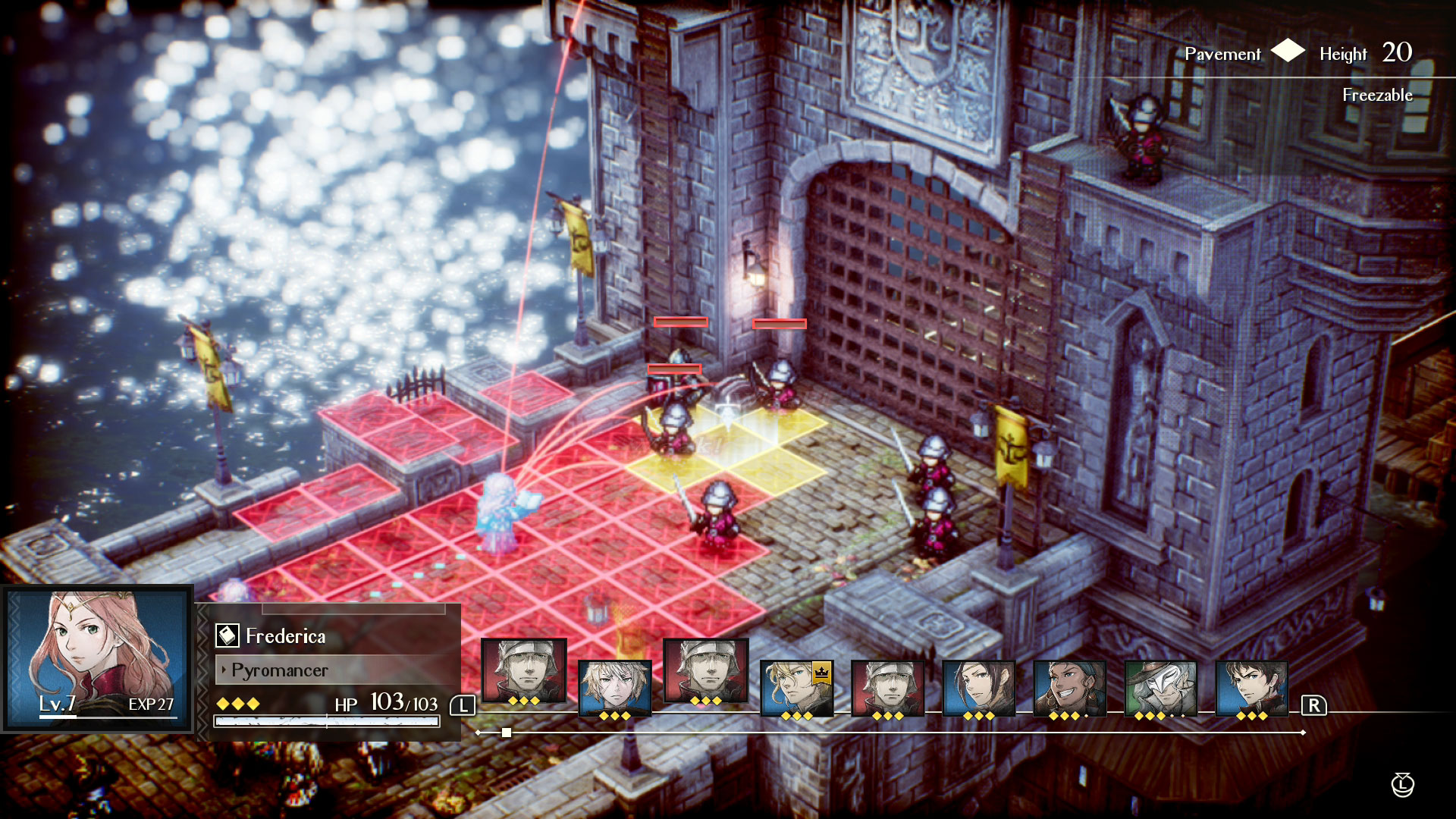

Triangle Strategy Nails Tactical Role-Playing But Holds Itself Back
Platform: Nintendo Switch
Genre: Turn-based strategy game throwback to Tactics Ogre
Since the release of Octopath Traveler in 2018, Square Enix has expressed a newfound interest in its era of retro games, as well as the visual aesthetic known as HD-2D. Easily spotted by a depiction of pixelated 2D sprites in a lavish 3D world, we’re now seeing a trend in which new and old games alike are getting the HD-2D treatment.
Triangle Strategy represents the latest game to hop on the HD-2D train. In the same vein that Octopath was a spiritual successor to the classic Final Fantasy RPGs of the SNES era, this game is a love letter to Square Enix’s lineup of beloved strategy RPGs such as Tactics Ogre and Final Fantasy Tactics. Is it any good though? Or is it just nostalgia fan service that rings hollow?
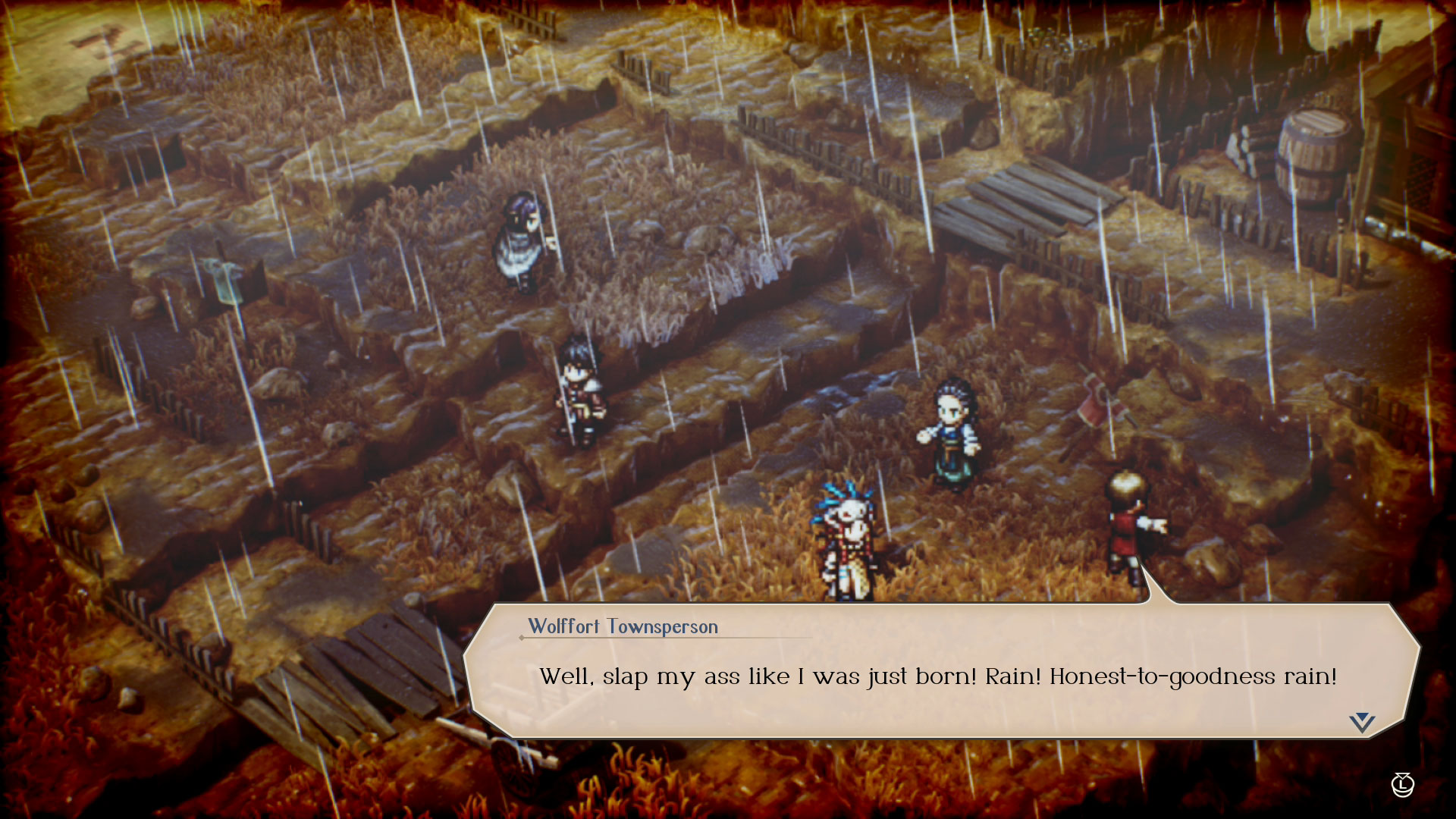
The premise of Triangle Strategy is simple. You play as Serenoa, lord to House Wolffort of Glenbrook, one of three nations in the land of Norzelia. Yours is a country of bountiful green, contrasted against Aesfrost’s icy mountains and Hyzante’s scorching deserts. The three major nations have agreed to lay down arms and foster an era of peace, but political schemes in the shadows ensure that this peace is a short-lived one. As the flames of conflict flicker again, it’s up to you to navigate Serenoa and his army through battles and discover the truth behind the war.
The depth of politics and war in the story may not come as a surprise to fans of the SRPG genre. From the get-go, the game goes through great lengths to explain the state of the three nations, their economies and power, as well as how people are driven by scarce commodities like salt, or the furor of passionate nobles.
The world feels real – perhaps all too real when Aesfrost accuses Glenbrook of breaking its treaties, before leveraging this as a means to justify a military invasion on Glenbrook. With the monarchy taken over and turned into Aesfrost’s puppet, it makes for a gripping story as House Wolffort works to fight the war from the inside out, all while Hyzante also seeks to sink its opportunistic fangs wherever it can.
The storytelling of Triangle Strategy is filled with such expositions. Though the game throws you into a battle against some ruffians early on so you can get a taste for combat, the next hour or two is spent introducing key players and setting the stage for the story’s pivotal twist.
There’s an ever-ongoing debate about whether such lengthy stories are worthwhile in games, but I never found myself bored by the plot. When experiencing RPGs, I enjoy understanding the stakes at play as this lends to the emotional satisfaction of playing through specific battles. Triangle Strategy provides this in spades, weaving political intrigue and then striking characters with pain and doubt that give you the incentive to want to help them.
This is perhaps not everyone’s cup of tea and Triangle Strategy is certainly dense with text. Luckily, it also includes useful visual novel staples such as fast-forwarding and a text log, the latter of which is accessible even while exploring the world or making dialogue choices.
Burdens Shouldered Together
And speaking of dialogue choices, how you reply is crucial to Triangle Strategy’s progression. Whenever Serenoa is to speak his opinion, you are given three dialogue choices that govern each of three attributes: Morality, Utility, and Liberty. How you respond affects your alignment to these attributes, otherwise known as Convictions. This allows Serenoa to recruit new party members or sway the opinion of his comrades during crucial voting segments known as the Scales of Conviction.
The idea behind the Scales of Conviction is quite interesting, as you’ll have seven key allies who will each vote on how you will proceed with the story. Though their minds are either made up or undecided, you are given the chance to sway their opinion. This is usually done by exploring maps, gathering information by speaking to NPCs, and then choosing the right dialogue choices in an honest discussion. However, your Conviction stats are ultimately the determinant here, and your allies may still stick to their beliefs if your stats aren’t up to snuff.
I was thoroughly engaged with the voting system and its depiction of different moral roads in a bloody and unjust war. Characters express their views for and against certain choices, and while their hearts are often in the right place, the drawbacks of such choices in times of war are also plain to see.
That being said, voting system’s reliance on Conviction stats does come with flaws. While allies not budging from their views is a reasonable consequence of low Conviction, Conviction stats are also unfortunately hidden – or at least they are on a fresh New Game run. Without any way of observing your Conviction progress, it sometimes feels like a shot in the dark to try and improve your standing with certain characters – many of whom also have vague alignments of their own.
Certain actions in battle also affect your Convictions – the game constantly notifies you that Serenoa’s Convictions are being affected, but fails to reveal how they are being affected. Not knowing what to do in both these voting sessions and in battle cheapens the strategic incentive, and you’re left waddling through a 30-40 hour playthrough before you get to practically see any of this information on a New Game Plus run.
The game plays on the expectation that players should experience the fruits or consequences of their own choices. This may appeal to some, but it was hard for me to see the value in getting locked out of the best ending of a very long playthrough when I considered that it happened partly due to trivial reasons such as that time I didn’t say someone’s hair looked beautiful.
Flaws aside, the downtime and focus on story in Triangle Strategy is a welcome addition to the SRPG formula. You’re given the opportunity to wander and speak to NPCs to learn more about character motives and the lore. In exploring, you obtain useful items and can even study maps casually before they become hostile battlefronts. Though this can drag for those who just want in on the next action, Triangle Strategy’s downtime phases aren’t too strict and are usually much easier to speed through than, say, adhering to Fire Emblem Three Houses’ calendar system.
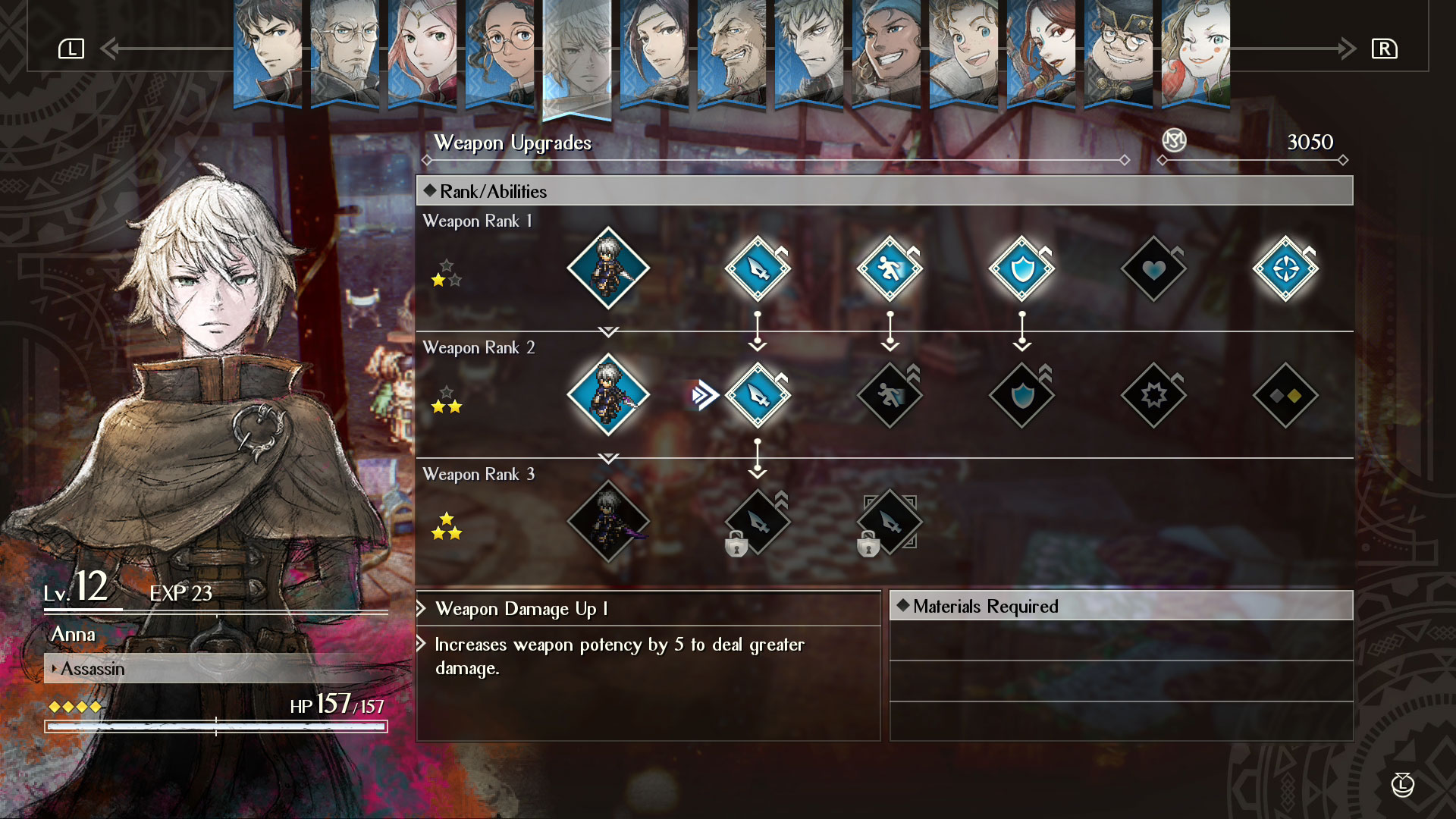
When it comes to battles, Triangle Strategy takes inspiration from Square Enix’s own Tactics games, delivering 3D isometric environments with elevation. The maps in Triangle Strategy are clever, providing various useful paths that are sometimes only accessible by different characters.
Hughette, for example, rides an Eagle and can scale rooftops easily, where she can snipe enemies from above. Roland is a cavalry soldier, and though he moves swiftly across the map, he can’t climb ladders. Frederica can burn down barricades with her fire magic, opening a shortcut for your army. And the list goes on.
It also helps that these maps can get pretty dynamic when it comes to interactions. You can melt icy terrain with fire and strike at the puddles with lightning to inflict extra damage. Useful objects such as cables for transportation, oil traps, and more are also abundant, giving plenty of strategic choices aside from just abilities and stats.
The battle system itself is also robust yet easy to get into. Though some strategy games use a player and enemy phase for combat, Triangle Strategy instead utilizes a regular turn-based format, meaning that units will act one after another based on their speed rather than as a group.
Special abilities such as magic, inflicting poison, or shooting blinding arrows, cost TP. Though TP isn’t unlimited, it also slowly replenishes per turn, allowing players to have fun with skills and employ smart decision-making without needing to fuss about saving on resources.
Attacking enemies from behind guarantees a critical hit, while performing a pincer attack will have your ally on the other end perform a follow-up attack. The fact that enemies can also use these tactics and sometimes outnumber you can also change up position dynamics in an exciting way.
In Triangle Strategy, your units aren’t quite customizable and instead stick to a single role. Healers are healers and swordsmen are swordsmen. You can promote these units to more powerful versions of their class, thus gaining access to more max TP and better abilities, but this is a mostly linear process. This approach is no doubt easier to grasp but leaves a lot to be desired when you have certain characters you prefer more than others.
Likewise, strengthening characters’ weapons at the Smithy isn’t at all impressive. Raising Anna’s accuracy, for instance, will cost materials that are obtainable as drops from enemies. They’re marginal upgrades that are gated behind grinding, with the payoff sometimes being entirely unnoticeable for the amount of effort put in.
It’s clear here that although Triangle Strategy is a spiritual successor to the Tactics games, it is also striving to be a less convoluted one. Progression systems have been drastically simplified compared to other games within the genre and units are deemed useful or less than useful solely by their utility. The choice paralysis of how to customize your giant roster of units is pretty much removed but at expense of being able to adapt your favorite characters to the game’s strategy dynamics. I can see the reasoning behind these design decisions, but the lack of player expression strikes as a bit of a disappointment for an RPG veteran such as myself.

Like Octopath Traveler before it, Triangle Strategy is a HD-2D title that carefully weighs itself between capturing the spirit of older games while also shouldering its own identity. It lands this for the most part as the story is intriguing, albeit dense, with story branches and endings that encourage replayability. Combat is fulfilling and expertly designed atop an old formula, providing satisfying tactical avenues for players. The music is incredible, with moods that encapsulate the heat of battle and transitions that capture the excitement of impending victory. I can firmly see this as a great introductory tactical RPG, seeing as it captures the essence of the genre without piling too much information on the player.
From a veteran perspective, while Triangle Strategy certainly scratches that itch, it can be somewhat limiting with its progression mechanics. Materials earned for upgrades sometimes boil down to luck, and levels eventually become the end-all-be-all for success in a map. This at times leads to frustration that you are being forced to grind to win rather than being allowed to cleverly use your wits.
Both nostalgic and modern, Triangle Strategy is a well-designed strategy RPG that wields beautiful visuals as it does an engaging story. While it never lives up to the complexity of its predecessors, its willingness to so avidly place its players within the scope of its wartorn lands sets it apart as an excellent title for genre fans and newcomers in its own right.
Review copy provided by Square Enix on release date.

By Fitri Razif|February 11, 2022
Platform(s): PC Genre: Classic Quake-like Van Helsing First Person Shooter Despite it not pushing the boundaries or standing out in any particular...
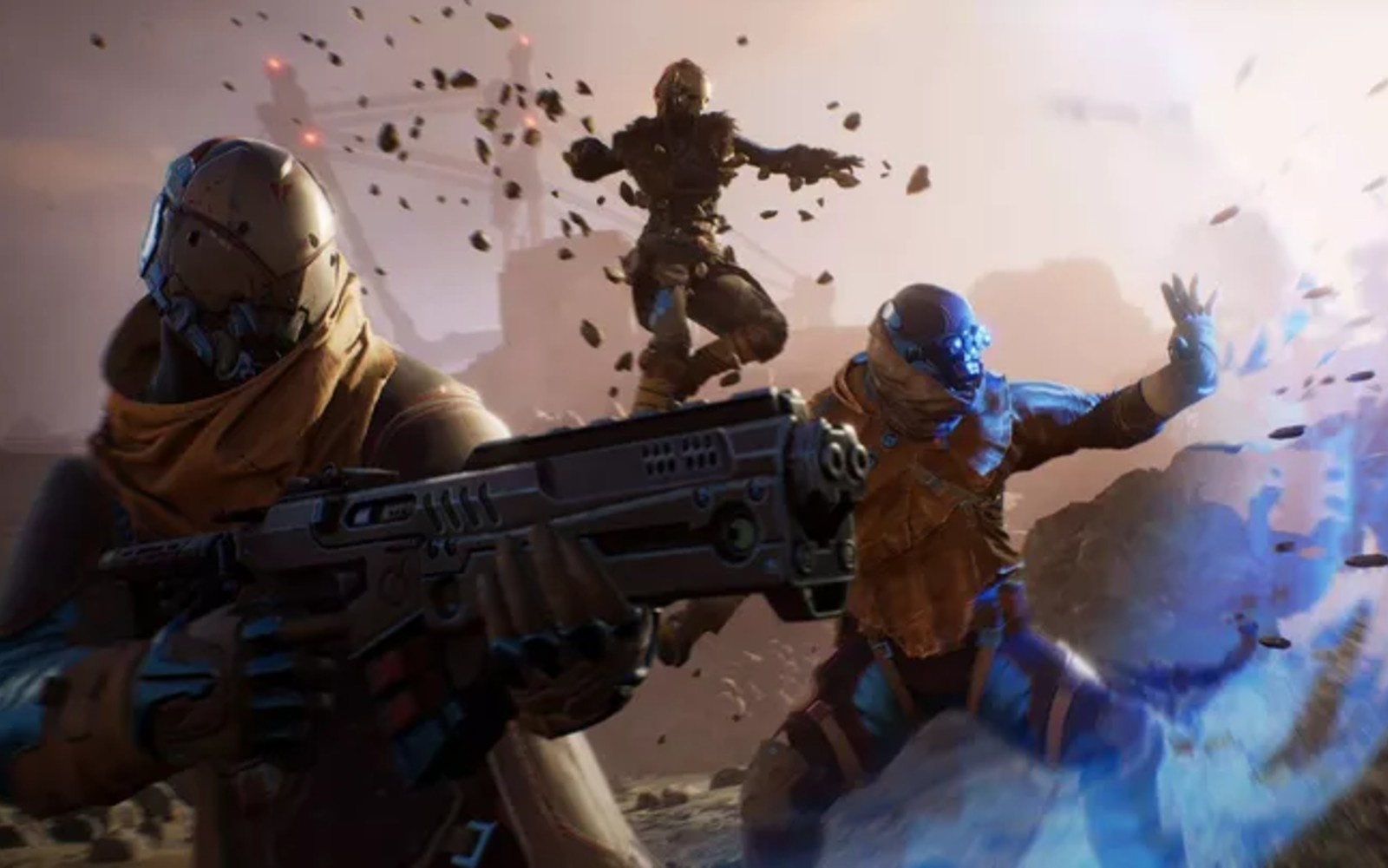
By Jon Toyad|March 16, 2021
In yet another winning move from Xbox, the upcoming Square Enix and People Can Fly co-op loot-based RPG shooter Outriders will be available on Xbox Ga...
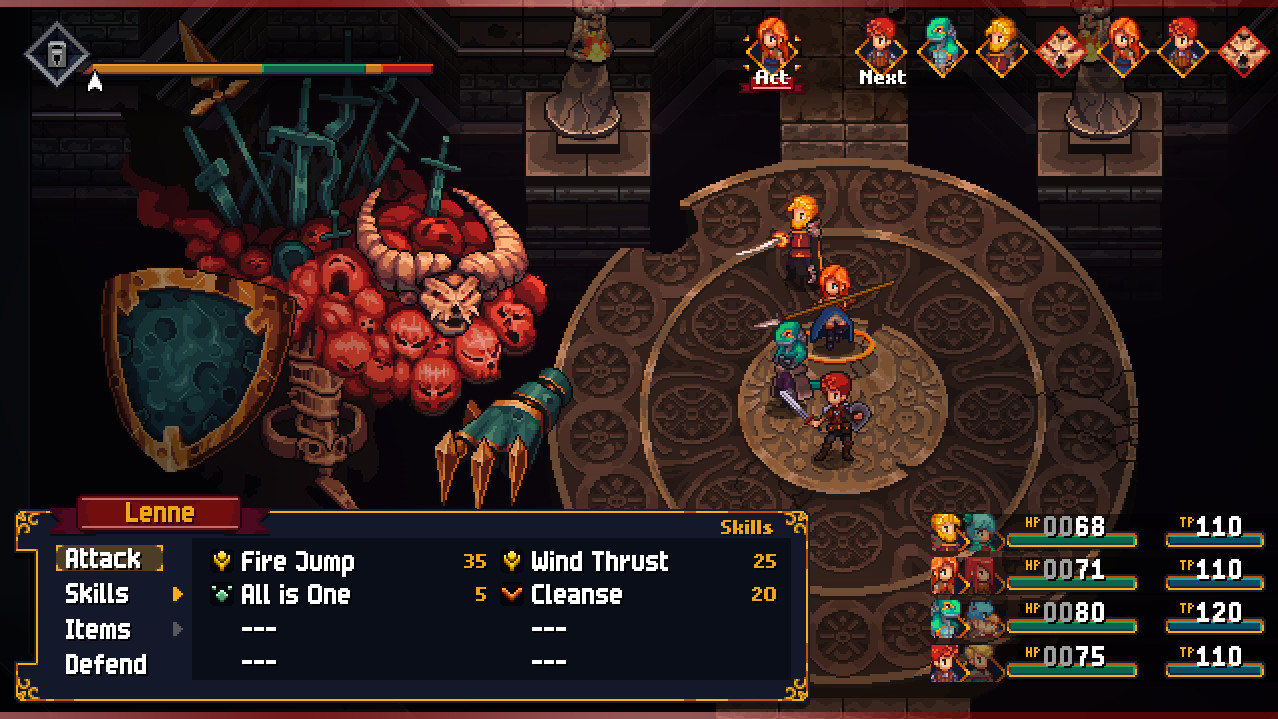
By Kaemon Ong|December 7, 2022
Platforms: PC (version reviewed), Nintendo Switch Genre: 16-bit RPG tribute Chained Echoes delivers a very familiar experience for anyone who is a...

By Lewis Larcombe|December 15, 2024

By Jon Toyad|December 4, 2024

By Lewis Larcombe|November 29, 2024

By Kakuchopurei|November 23, 2024

By Alleef Ashaari|December 22, 2024

By Alleef Ashaari|December 22, 2024

By Lewis Larcombe|December 15, 2024

By Jon Toyad|December 4, 2024

By Lewis Larcombe|November 29, 2024

By Kakuchopurei|November 23, 2024

By Lewis Larcombe|December 15, 2024

By Jon Toyad|December 4, 2024

By Lewis Larcombe|November 29, 2024

By Kakuchopurei|November 23, 2024
Copyright @ Kakuchopurei 2024